
At nearly 70 years old, artist Nguyen Cao Binh is known as the “man who paints with thread” because his works are vivid, sharp, harmonious, reaching the peak of both art and technique. Photo: The Duyet/VNA
Ups and downs of a 200-year-old craft village
At the age of nearly 70, artisan Nguyen Cao Binh (Bui Xa village, Thu Tri commune) is respectfully called by people in the profession by the name "Thread painter" because his works are not just ordinary embroidery products but have reached a level of mastery, sharpness, and harmony in both art and technique. He is also the first person in the traditional embroidery village of Minh Lang to be awarded the title of "Embroidery artist" in 2008.
Mr. Binh shared that, according to historical documents, in 1825, the whole Thai Binh region was flooded, had poor crops, people were hungry, and diseases were rampant. Three elders, Nguyen Nhu Khang, Nguyen Nghia, and Nguyen Ca, left the village to make a living and accidentally learned the embroidery craft to teach their children and the people of Goi and Bui villages (Phu Loi and Bui Xa villages today), from which the embroidery craft was born in Minh Lang.
During the feudal period, Minh Lang's embroidery products were mainly hats, shirts, dresses, and costumes of court officials. During the years of war, although the country was affected, the traditional craft was still maintained, but the number of embroidery frames was not much. The 70s and 80s of the 20th century was the peak of the village when it became a giant embroidery workshop, attracting thousands of households to work, bringing high income to local people with many products exported to the Soviet Union and Eastern European countries. However, in the 90s of the 20th century, the collapse of the Soviet Union and Eastern European markets greatly affected Minh Lang embroidery, and the craft village fell into difficulty.

Artisan Nguyen Cao Binh (Thu Tri commune, Hung Yen province) despite his old age still silently cherishes each needle and thread to preserve the spirit of the profession left by his ancestors. Photo: The Duyet/VNA
According to artisan Nguyen Cao Binh, the most outstanding feature of Minh Lang embroidery is the sophisticated “color pouring” technique, which allows for a soft color transition like a painting, creating a characteristic depth and smoothness. The embroidery stitches here are small and even, and the composition of the painting is also carefully crafted according to traditional visual arts, ensuring color harmony and proportion.
Minh Lang artisans can embroider many genres from landscapes, still lifes, worship paintings and especially, the most difficult genre of embroidery is portrait embroidery, which has also been conquered by skilled artisans here such as artisan Nguyen Cao Binh. For him, portrait painting is very difficult, takes a lot of time, requires the most likeness of the character and depicts the spirit through the eyes, smile, through each facial line, but this is the way he breathes life into his passion and contributes to affirming the value of Minh Lang craft village today.
Among the thousands of products that have been made, the embroidery of President Ho Chi Minh is always the topic that he is most passionate about. In addition to the portrait he embroidered of Uncle Ho decades ago that is hung solemnly in his house, he is embroidering a painting with the theme of President Ho Chi Minh talking to cadres and people at Dinh Phuong Cap, which bears the unique mark of his hometown - Hiep Hoa commune, old Vu Thu district, now Thu Tri commune, Hung Yen province, along with two paintings of Uncle Ho's paternal and maternal hometowns.
Need to care about passing on the profession

Amidst the hustle and bustle of life, people in Thu Tri commune, Hung Yen province still work diligently and tirelessly on their embroidery frames, meticulously stitching each needle and thread to preserve their traditional craft. Photo: The Duyet/VNA
Like many other traditional craft villages, Minh Lang embroidery village is at risk of disappearing when it has to compete with industrial embroidery products and consumer trends of modern society, while the labor force, especially young workers, do not choose to stick with the profession.
Ms. Hoang Thi Phuong (Bui Xa village, Thu Tri commune) shared that her family has a tradition of 3 generations attached to the traditional embroidery profession. Learning basic embroidery takes about 3-4 months, but to achieve sophisticated embroidery requires a lot of experience, talent, and an artistic eye. Now over 60 years old, Ms. Phuong still worries about how to preserve the craft her ancestors left behind. Because in reality, the maximum daily wage of an embroiderer is only about 200,000 VND/day, making it difficult to attract young workers.
That is also the concern of artisan Nguyen Cao Binh. Over the years, he has not only kept the profession for himself but also passed on the quintessence, techniques and pride of a once famous craft village to anyone who wants to stick with Minh Lang embroidery. Because for him, teaching each embroidery stitch to the younger generation is the hope of sowing new "germinations", even if they are just a few small sparks in a village that is gradually losing its hand-embroidery frames.

In Thu Tri commune, there are many production facilities and embroidery complexes with about 1,000 workers. Photo: The Duyet/VNA
Mr. Nguyen Duc Luan, Party Secretary, Chairman of Thu Tri Commune People's Council, said that the commune was established on the basis of the arrangement of 3 communes Hiep Hoa, Minh Lang and Song Lang; in which Minh Lang embroidery craft village is a typical traditional craft of the locality. Currently, in the area, there are 3 enterprises and many production facilities, embroidery complexes that combine both manual embroidery and industrial embroidery. To preserve the craft village, in the coming time, the commune will organize training courses to improve the skills of embroiderers; combine with artisans and skilled workers to open embroidery classes for the younger generation, at the same time, promote the brand, build experiential tours, visit craft villages... thereby contributing to preserving the traditional embroidery craft of the locality.
In the modern life, the persistent efforts of artisans and local authorities have been contributing to preserving the quintessence of the 200-year-old craft village. Each traditional embroidery product is not only an artistic creation, providing a livelihood for local people, but also carries the value of connecting the past with the present, extending the pride of local people in a traditional craft imbued with the cultural identity of the Vietnamese nation.



Amidst the hustle and bustle of life, people in Thu Tri commune, Hung Yen province still work diligently and tirelessly on their embroidery frames, meticulously stitching each needle and thread to preserve their traditional craft. Photo: The Duyet/VNA
Source: https://baoangiang.com.vn/gin-giu-hon-cot-nghe-theu-truyen-thong-minh-lang-a467538.html












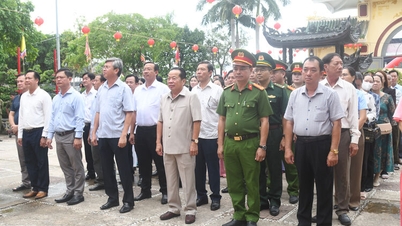









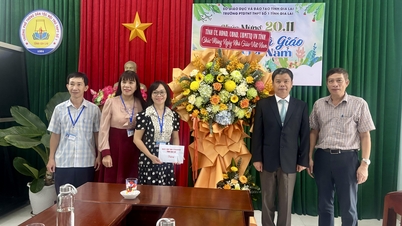

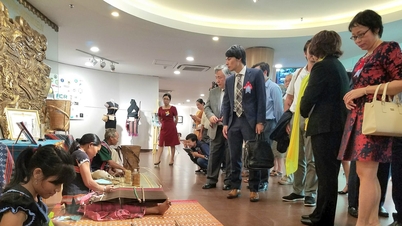









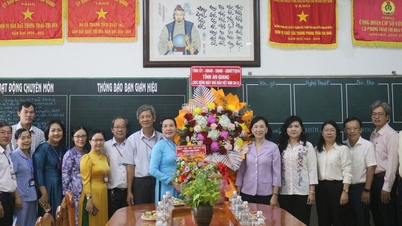

![[Photo] General Secretary To Lam and National Assembly Chairman Tran Thanh Man attend the 80th Anniversary of the Traditional Day of the Vietnamese Inspection Sector](https://vphoto.vietnam.vn/thumb/1200x675/vietnam/resource/IMAGE/2025/11/17/1763356362984_a2-bnd-7940-3561-jpg.webp)









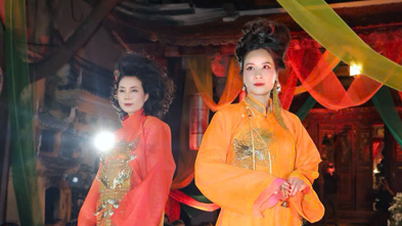



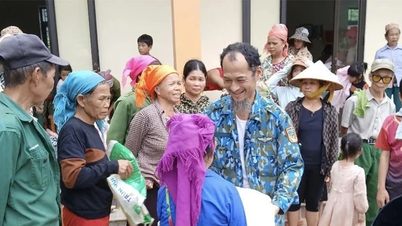


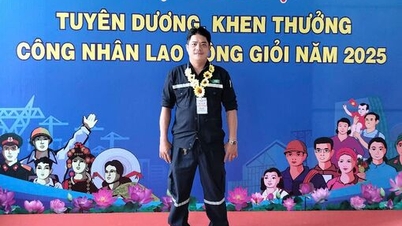








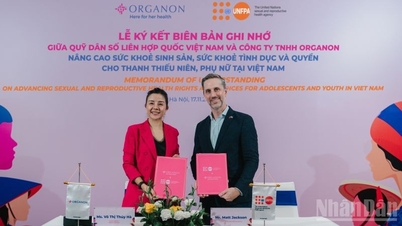











































Comment (0)